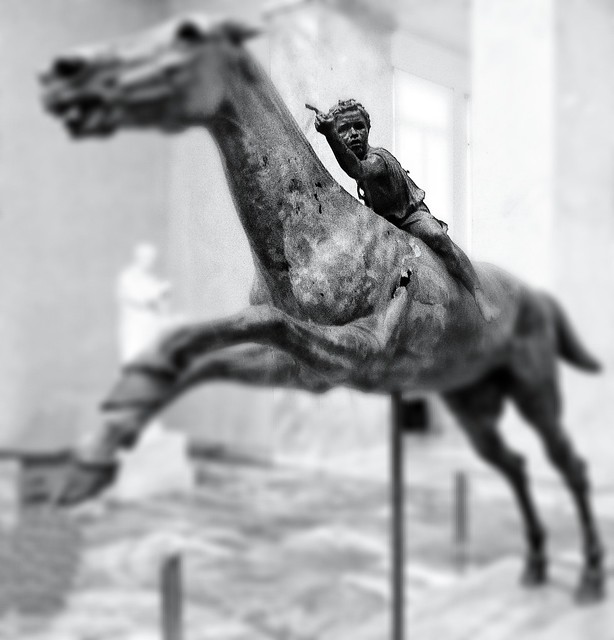Introduction
The Jockey of Artemision is an extraordinary Hellenistic bronze statue that captures the elegance and dynamism of a young boy riding a horse. Dating back to approximately 150–140 BC, this sculpture is remarkable for its artistic craftsmanship and its status as one of the few surviving original bronze statues from Ancient Greece.

Artistic Significance
The rarity of the Jockey of Artemision is particularly noteworthy, as it represents a racehorse—an infrequently depicted subject in Greek sculpture. Most ancient bronzes were melted down for their materials over the centuries, which makes the survival of this piece all the more significant. The statue’s intricate details showcase the sculptor’s skill, reflecting not only the boy’s poised expression but also the powerful musculature of the horse, effectively capturing movement and emotion.
Historical Context
The statue’s preservation can be attributed to its fortuitous loss in a shipwreck during antiquity. Discovered off the coast of Cape Artemision in 1926, the Jockey of Artemision offers invaluable insights into the artistic achievements and cultural values of the Hellenistic period. Its discovery has provided scholars with a deeper understanding of the techniques and styles employed by ancient artisans.

Cultural Importance
Historical interpretations suggest that the statue was likely dedicated to the gods by a wealthy patron as a tribute to victories in horse racing, particularly in the prestigious single-horse race known as kēles (Greek: κέλης). Equestrian events held significant importance in ancient Greek society, serving not only as displays of athleticism but also as means of social status and prestige. Victors in these races were often celebrated, and dedicating a statue to honor their achievements was a way for patrons to demonstrate their wealth and piety.

Legacy and Influence
Today, the Jockey of Artemision stands as a testament to the artistry and cultural heritage of ancient Greece. It invites admiration and study from historians, art enthusiasts, and visitors alike. The statue’s blend of aesthetic beauty and historical significance continues to inspire and inform our understanding of the values and accomplishments of a civilization that placed great emphasis on both art and athletic prowess.

Conclusion
In summary, the Jockey of Artemision is not just a remarkable work of art; it is a reflection of the societal values and artistic excellence of ancient Greece. Its preservation serves as a bridge to the past, allowing us to appreciate the cultural and historical context from which it emerged. As one of the few surviving bronze sculptures from this era, it remains a vital piece of our global heritage.

